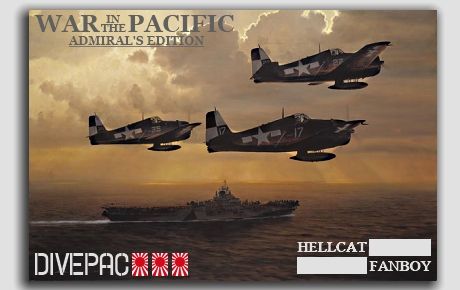Nikademus
Posts: 25684
Joined: 5/27/2000
From: Alien spacecraft
Status: offline

|
quote:
ORIGINAL: wdolson
The Defiant's inherent weaknesses as a day fighter were balanced out a bit by the dark, but it was not really a stellar night fighter. I have a book around here on the Defiant. If I recall, the Defiant night fighters only shot down a relative few German aircraft during the Blitz. It was replaced by the Beaufighter as soon as they became available.
The He-177 was clearly a flawed design, almost all down to the engines. Heinkel produced a prototype of an He-277 with 4 separate engines on a longer wing. It would have been a much more reliable aircraft, but the Germans were fixated on all bombers being capable of dive bombing until after the He-177 was in production.
The Ju-87 was one of those designs that was approaching obsolescence when the war began, but it was pressed into service anyway. The Germans didn't realize how vulnerable it was until it encountered a first class air force, then it's inherent vulnerabilities became obvious.
I would put the Ju-87 into the same category as the Swordfish or the TBD. They were good aircraft for when they were designed, but they were used past the point where they should have been replaced with something more modern, for whatever reason.
When the Buffalo was flown by good pilots with good engines, it didn't do too badly. It was not quite as good as the Wildcat, which is why the USN phased it out. It got such a bad reputation because most of the times it went into combat it was either in a hopeless situation and/or piloted by less than experienced pilots. The RAF pilots at Singapore were able to attain about a 1:1 victory to loss ratio, but they were badly outnumbered.
The Dutch Buffaloes were delivered with weak engines because no new engines were available and cast off, rebuilt airliner engines were used instead. The Dutch pilots also had a lot less of the institutional knowledge the British had. The British Far East air force had few combat veterans, but the RAF had already been at war and had some successes for 2 years. There were some lessons of modern air war that had made it to the Far East pilots. The Dutch air force only had one, very short, and very losing air campaign against Germany. Their pilots had less institutional experience behind them.
The Marines at Midway were pretty green against the best pilots in the IJN.
The Finns used the Buffalo's strengths and had the experience to balance the weaknesses. The Finnish Buffaloes were mostly facing older Russian aircraft for most of their carriers, but they scored against up to date Russian aircraft too.
When it comes to fighters, a top pilot in a generation behind fighter has the advantage over a green pilot in the most advanced fighter.
On whole I would say the Buffalo was among the less stellar aircraft of WW II. Was it one of the 10 worst? I probably wouldn't go that far, but it was well down the list.
Bill
As with any "best of" list. It comes down to what criteria the 'reviewer' emphasizes or prioritizes when coming up with such a list. Thus one will invariably rank aircraft differently. I had a recent example at my favorite watering hole discussing "the best fighter" of WWII with a couple vets (of later service years :-) ) Their "best" differed from mine because of the criteria. Their criteria was based in part on reputation and in part on impact on the war. My criteria ranked airframe versatility and updatability.
Same with worst of lists. Personally i think the Buffalo does warrent a worst of, but not because of the basic design which was, as Bill pointed out, not all that different from the F4F, of which it initially beat out for navy service!
Problem with the Buffalo was that the airframe didn't handle the inevitable upgrades needed which resulted in increased weight and reduced performance. (The Wildcat also suffered from this but to a lesser extent) However the worst aspect was quality control. Brewster it should be pointed out was the ONLY US aircraft company to go bankrupt during the period. Think about it. There's a war on. War is good for business, especially if you make weapons. They tanked.
The RAF Buffalos didn't perform too out of the average ratio loss that I find again and again in my day to day air battle studies. My charting of the RAF Buffalos produced a 3.4:1 ratio in favor of the enemy. Most often it's under 3:1 tactically, and operationally, in the earlier phase of the war often is closer to 2:1. There are some exceptions of course. Barbarossa start and the initial Japanese Blitzkrieg amongst them.
This leads to another point as Bill demonstrated. One can promote, or discount an airframe based on the statistical result. It's true that the Buffalos were outnumbered at times. Early warning was also deficient etc etc. Similar disadvantages also deviled the Japanese in their later battles though this is often not cited. ;-) Devil is in the details and discounts/promotions work equally for all sides of a conflict.
The Dutch pilots were a bit out of their depth of which better aircraft would probably not have made much difference.
But in the end what would put the Buffalo on my list was the poor quality control, followed by the weight increases which made it a dog in the air. I would however be lax if i didn't give mention to the Finnish. They utilized the B-239 (F2A-2) very well and Ford considers this to be the best variant and "not a bad fighter" to quote his study vs. the B-339/Buffalo/F2A-3 which added a whopping 900LBs to the airframe and turned it "into a slug"
< Message edited by Nikademus -- 3/5/2013 6:17:19 PM >
_____________________________
|
 Printable Version
Printable Version










 Once the war started the application of technology, innovation in equipment and tactics and and the massive upsurge in industrial output was truly amazing.
Once the war started the application of technology, innovation in equipment and tactics and and the massive upsurge in industrial output was truly amazing. 











 New Messages
New Messages No New Messages
No New Messages Hot Topic w/ New Messages
Hot Topic w/ New Messages Hot Topic w/o New Messages
Hot Topic w/o New Messages Locked w/ New Messages
Locked w/ New Messages Locked w/o New Messages
Locked w/o New Messages Post New Thread
Post New Thread